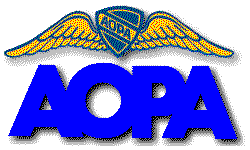Testimony From The DOT IG At A House Transportation Subcommittee Hearing Wednesday
A Congressional hearing Wednesday highlighted the benefits to the taxpayers of the FAA Contract Tower program, which allows the FAA to contract with the private sector to provide cost-effective air traffic control services at airports where these services would otherwise be cost prohibitive.

The Subcommittee on Aviation, chaired by U.S. Rep. Tom Petri (R-WI) (pictured), held a hearing on July 18, 2012, as the Department of Transportation Inspector General (DOT IG) continues its most recent audit of the Contract Tower Program. The DOT IG’s previous audit in 2003 demonstrated the cost-effectiveness of the program.
“The Contract Tower Program is a key component of our nation’s aviation system and provides vital air traffic services to communities, businesses, and travelers,” said Chairman Petri. “After almost three decades, this program remains highly popular with its users. Without the program, many communities would not be able to afford these critical services.
“The safety and efficiency of the Contract Tower Program has been validated numerous times by the Inspector General, the FAA, and the National Transportation Safety Board,” Petri stated. Regarding the latest information from the DOT IG, Petri continued, “The IG determined that contract towers had a lower number and rate of reported safety incidents than similar FAA towers. The IG also found that the contract towers provided air traffic services to low-activity airports at lower costs than the FAA could otherwise provide. The IG determined that the average contract tower costs roughly $1.5 million less to operate than a comparable FAA tower – due largely to lower staffing and salary levels.
“We are talking about towers at low activity airports, but they are also airports with mixed use and other operational conditions that make it essential they have a tower to ensure safety,” said Petri.
The Contract Tower Program has been in existence for almost 30 years. Currently, 250 airports in over 45 states participate in the program. Contract towers handle approximately 28 percent of all air traffic control tower aircraft operations in the United States but account for just 14 percent of FAA’s overall tower operations budget.

Calvin Scovel, the Inspector General of the Department of Transportation (pictured), discussed the DOT IG’s most recent findings. “Contract towers continue to operate at lower costs than comparable FAA towers,” Scovel said. “Our comparison of costs at our sample of 30 contract towers and 30 FAA towers with similar air traffic densities found that the average operations costs in fiscal year 2010 were about $537,000 for a contract tower and about $2.025 million for an FAA tower—a difference of $1.488 million, or 277 percent.” This cost difference between an FAA-staffed tower and a contract tower is even greater now than when the DOT IG last reviewed the program in 2003.
“The difference in cost is primarily due to two factors,” Scovel continued. “First, contract towers are staffed at lower levels than the comparable FAA towers. The 30 contract towers in our sample had an average of 6 air traffic personnel at the facility, while the sample of 30 comparable FAA towers had an average of 16 air traffic personnel. Second, contract tower controllers’ salaries, which are based on Department of Labor wage rates, are lower than the salaries paid to FAA controllers. For example, based on current Department of Labor rates, an air traffic controller at the Albert Whitted Tower near Tampa, FL, would receive base pay of about $56,000 per year, whereas an FAA-employed air traffic controller in Sarasota, FL, an area with a similar cost of living, would receive base pay ranging from about $63,000 to $85,000 per year, depending on experience.”
Of the 250 current contract towers, 136 were previously staffed by the FAA, according to the testimony of Walter Strong, Administrator of Max Westheimer Airport in Norman, OK. “Based on anticipated cost information from the DOT IG, if FAA were still staffing those 136 towers, the additional annual costs to taxpayers, based on fiscal year 2010 figures, would be approximately $200 million, which is $50 million more than the current budget to operate all 250 current contract towers across the entire country,” Strong said.
Contract towers are manned by highly experienced and highly trained professional controllers, 99 percent of whom are former military or FAA controllers with an average 20 years of experience. The FAA retains safety oversight of the contract towers and the controllers who staff them. All contract controllers are certified by the FAA, contract facilities are monitored on a regular basis by the agency, and staffing plans are approved by the FAA. Contract controllers are subject to the same rules, medical exam requirements, operational procedures and training as FAA controllers.

Further addressing the safety benefits of the Contract Tower Program, Melissa Rudinger of the Aircraft Owners and Pilots Association stated, “Establishment of an FAA Contract Control Tower at a General Aviation airport enhances the safety of flight for all aircraft operating at the airport and in the surrounding airspace.
“Federal contract towers operate together with FAA staffed facilities throughout the country as part of a unified national air traffic control system,” said Rudinger. “Without this federal program that sets safety and training standards, certifies operations and monitors all aspects of contract tower facilities, many of these towers would be forced to close – facilities that are critical to the safety of many local communities.”
Scovel urged the FAA to enhance oversight of the Contact Tower Program to ensure the continued safety. “While the Contract Tower Program continues to provide cost-efficient air traffic services that are supported by users, there are opportunities for FAA to improve its oversight and strengthen program controls,” Scovel said. “These opportunities include implementing a voluntary safety incident reporting program at contract towers, implementing policies that require contract towers to receive regular safety reviews, and improving agency oversight over the contractual aspects of the program.”
 ANN's Daily Aero-Linx (04.13.24)
ANN's Daily Aero-Linx (04.13.24) ANN's Daily Aero-Term (04.13.24): Beyond Visual Line Of Sight (BVLOS)
ANN's Daily Aero-Term (04.13.24): Beyond Visual Line Of Sight (BVLOS) Airborne 04.09.24: SnF24!, Piper-DeltaHawk!, Fisher Update, Junkers
Airborne 04.09.24: SnF24!, Piper-DeltaHawk!, Fisher Update, Junkers Aero-News: Quote of the Day (04.14.24)
Aero-News: Quote of the Day (04.14.24) ANN's Daily Aero-Term (04.14.24): Maximum Authorized Altitude
ANN's Daily Aero-Term (04.14.24): Maximum Authorized Altitude





